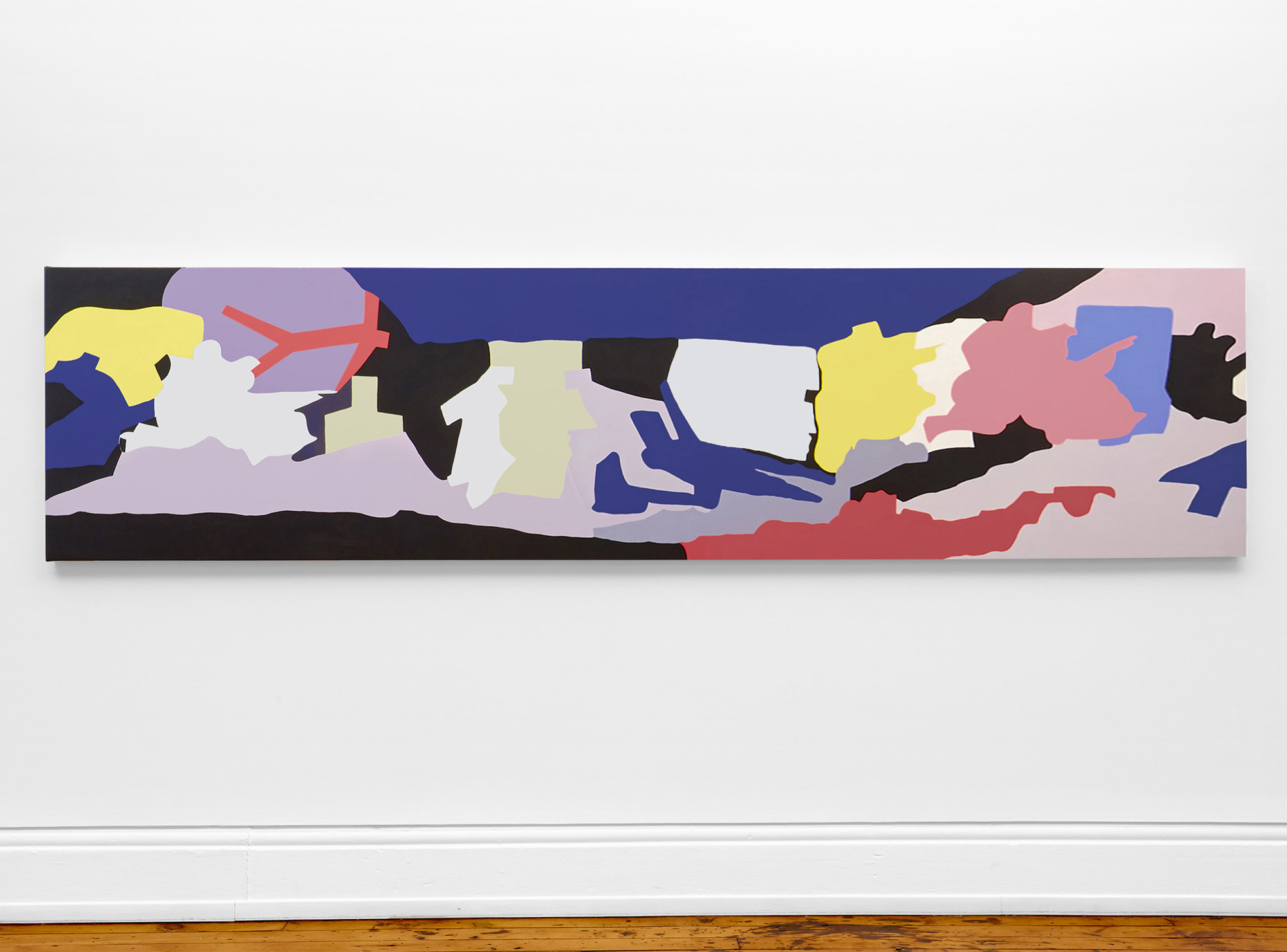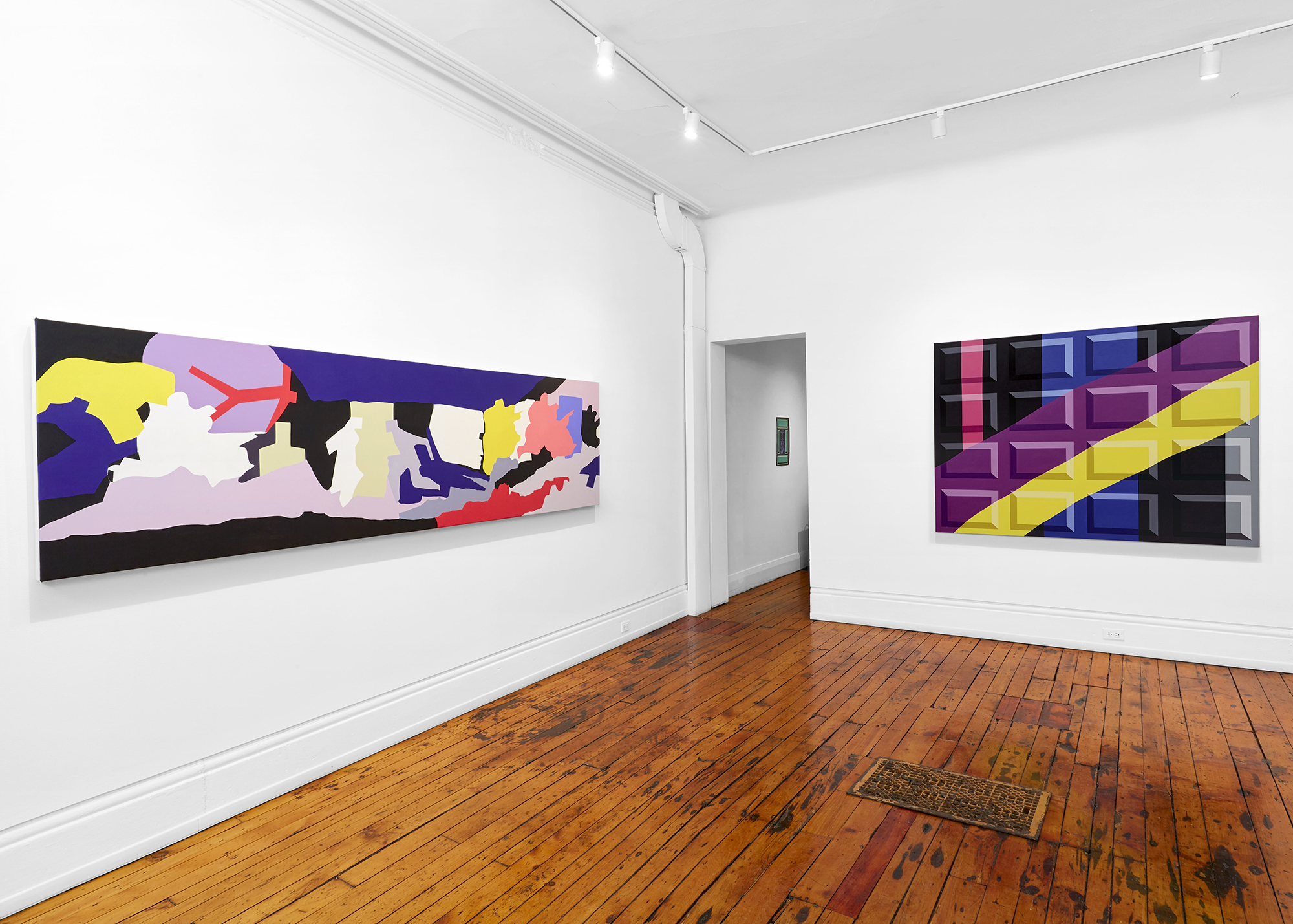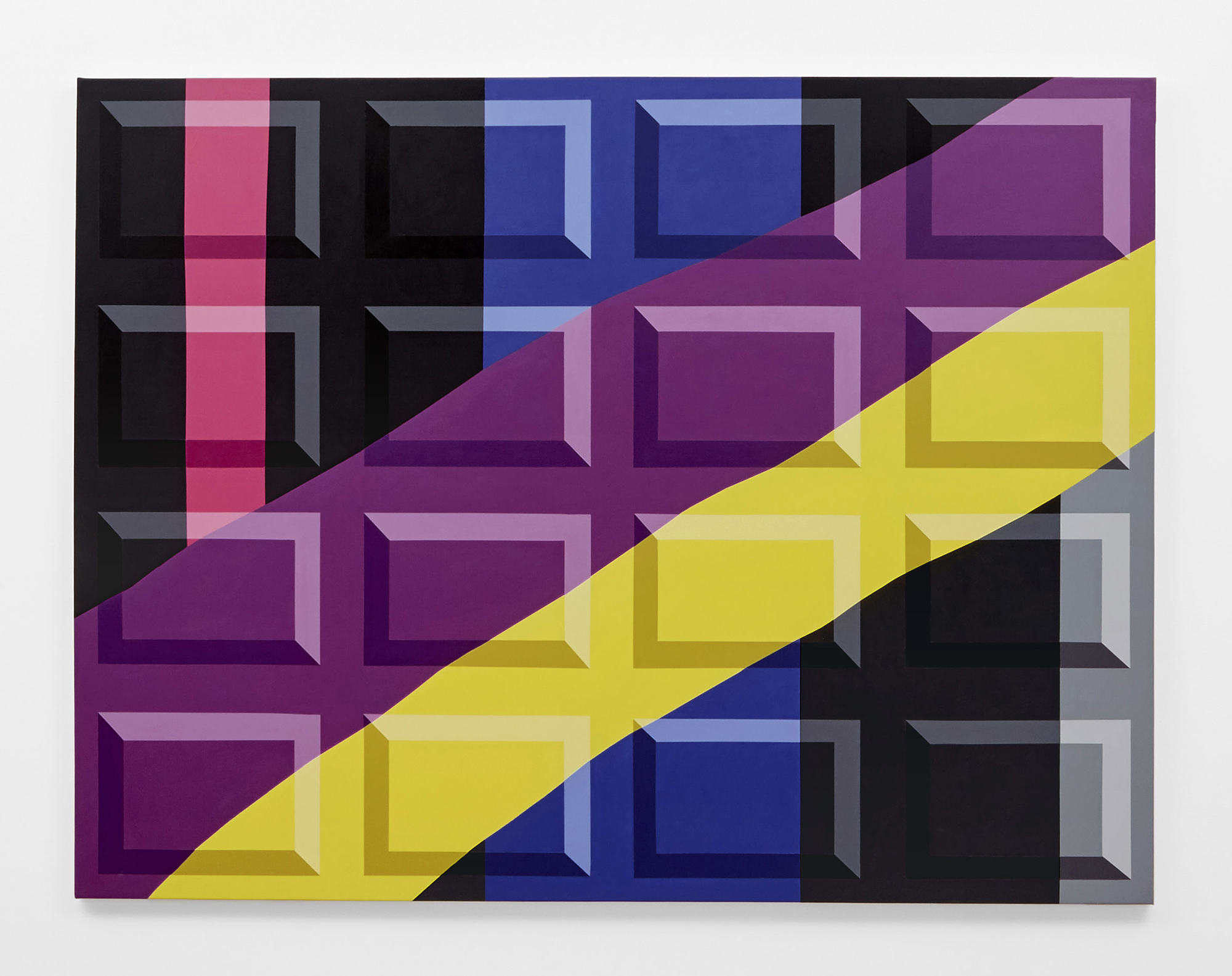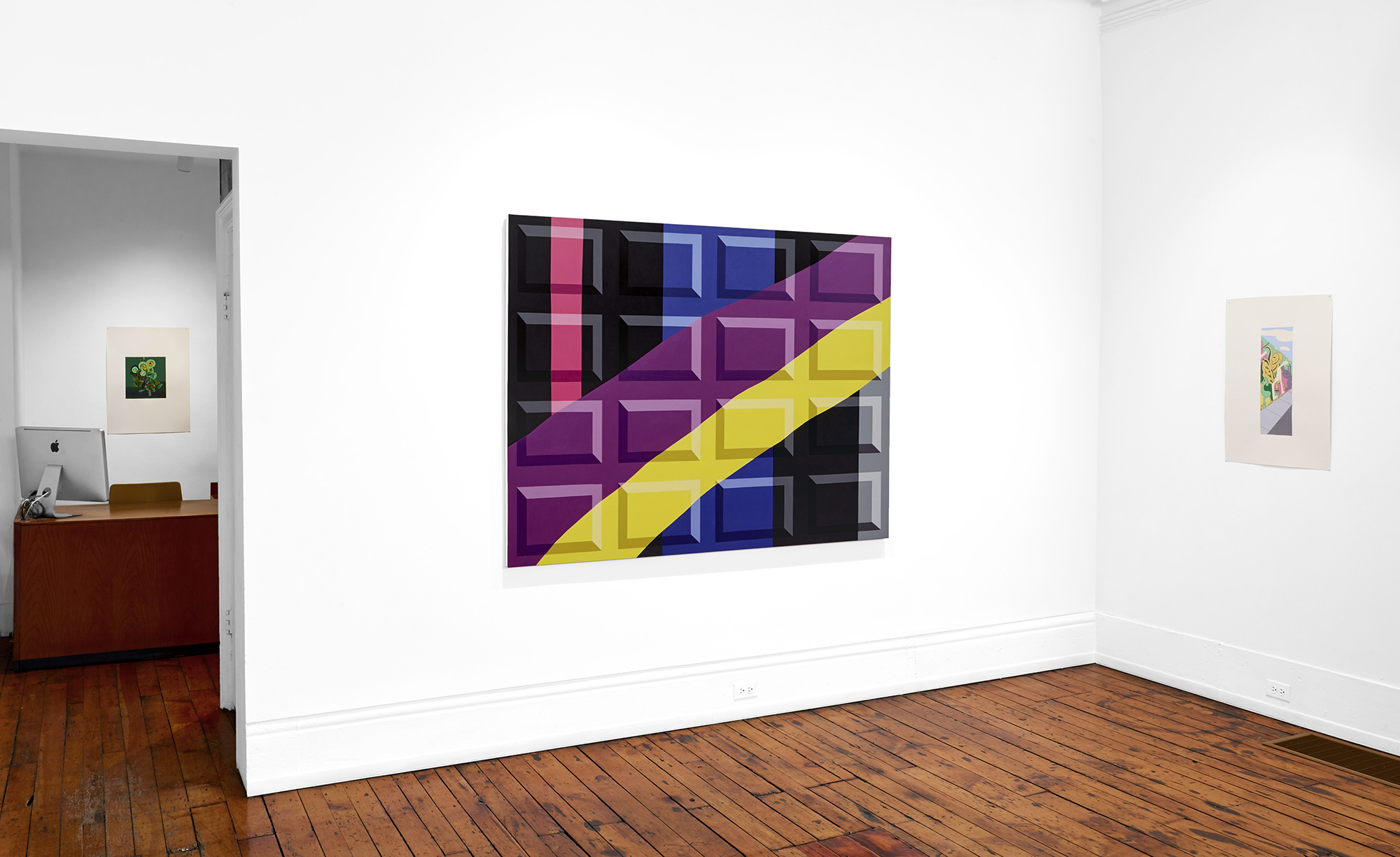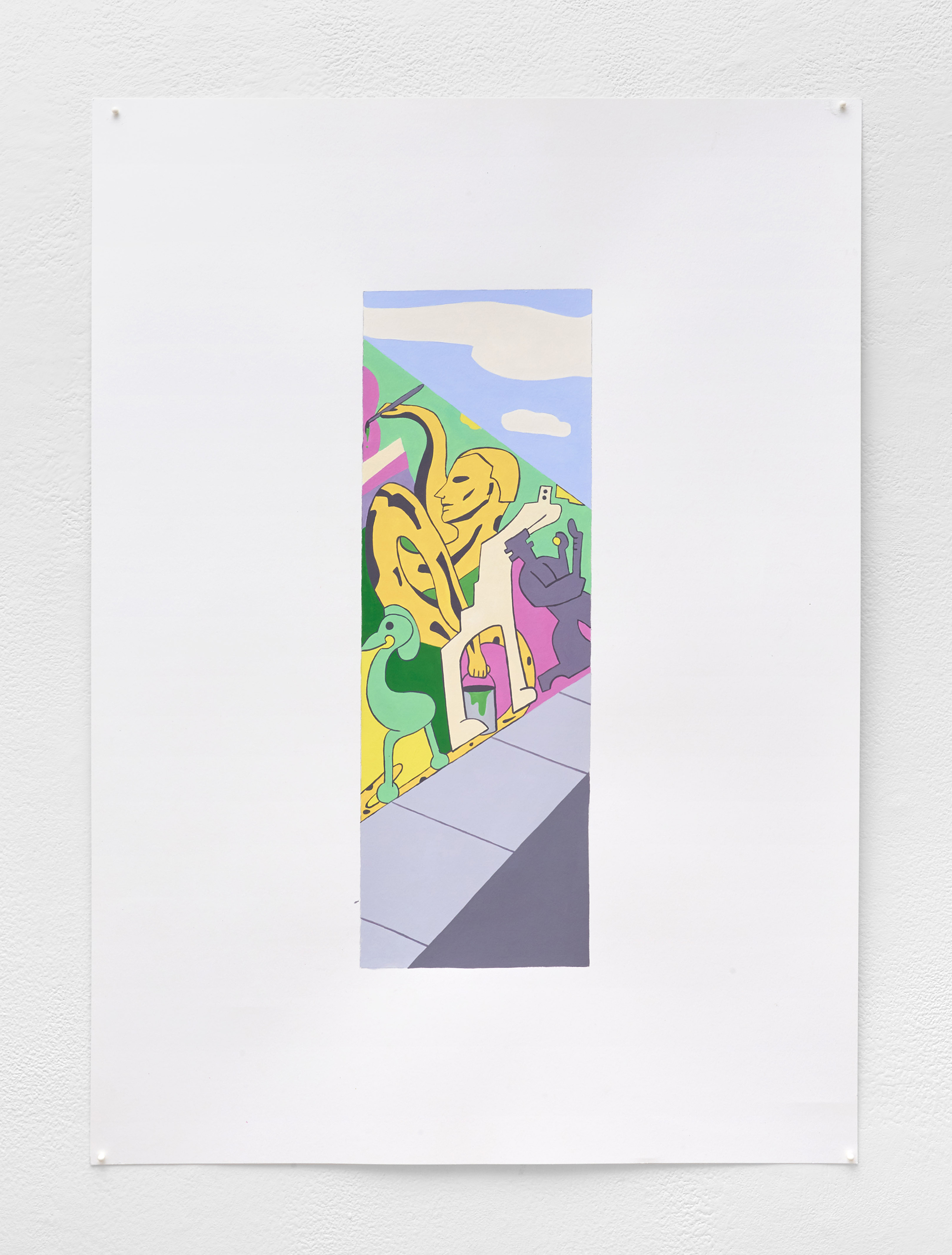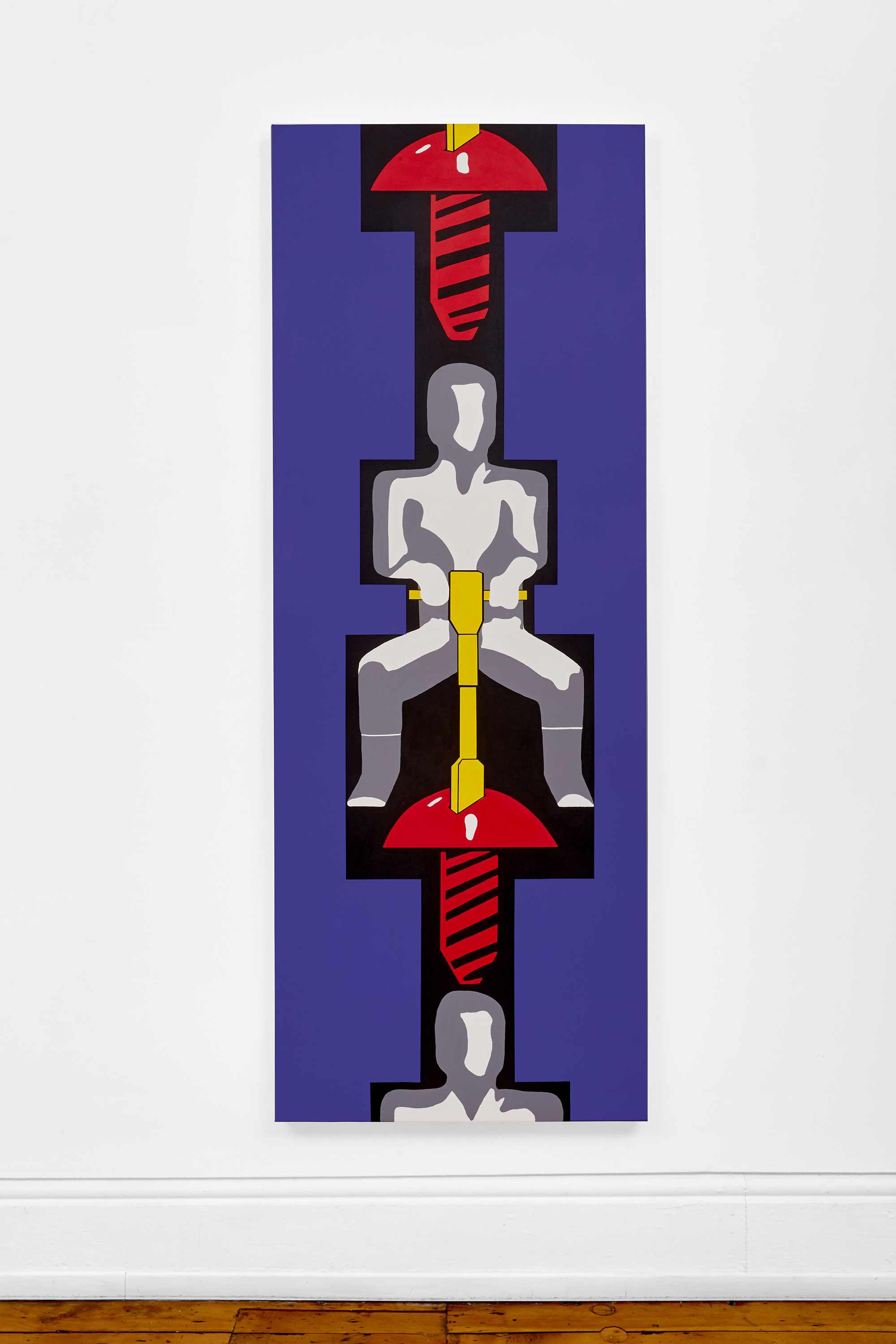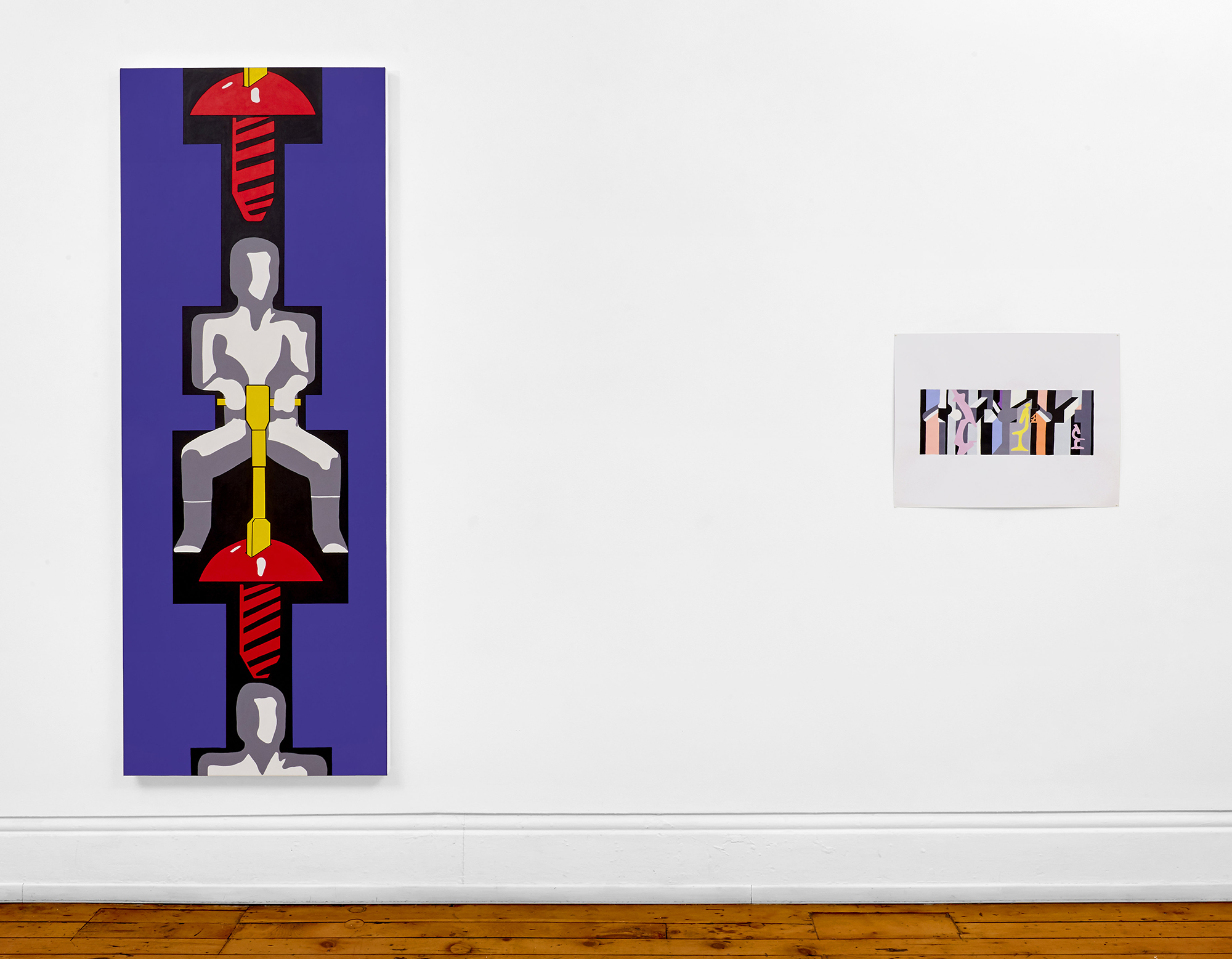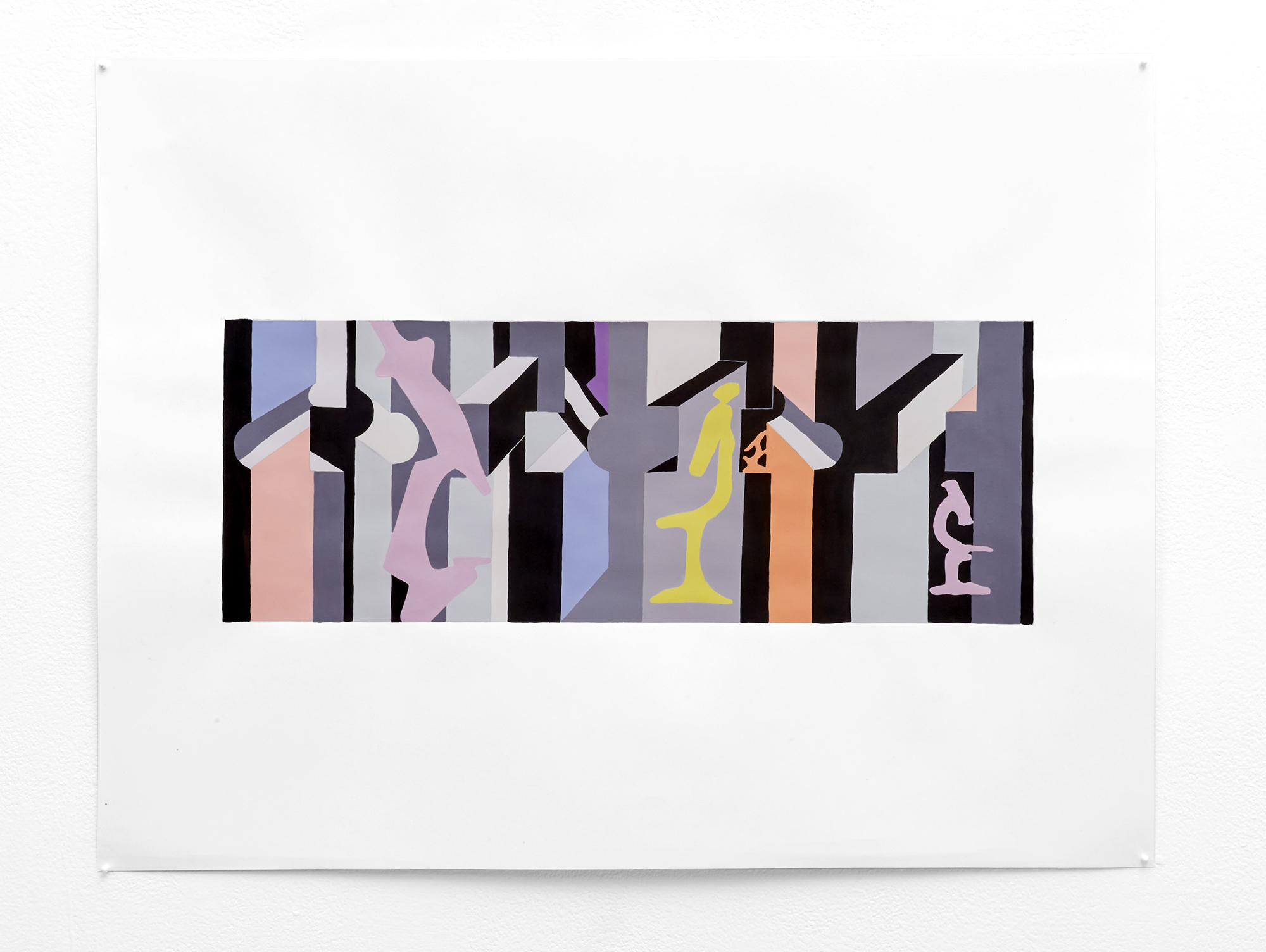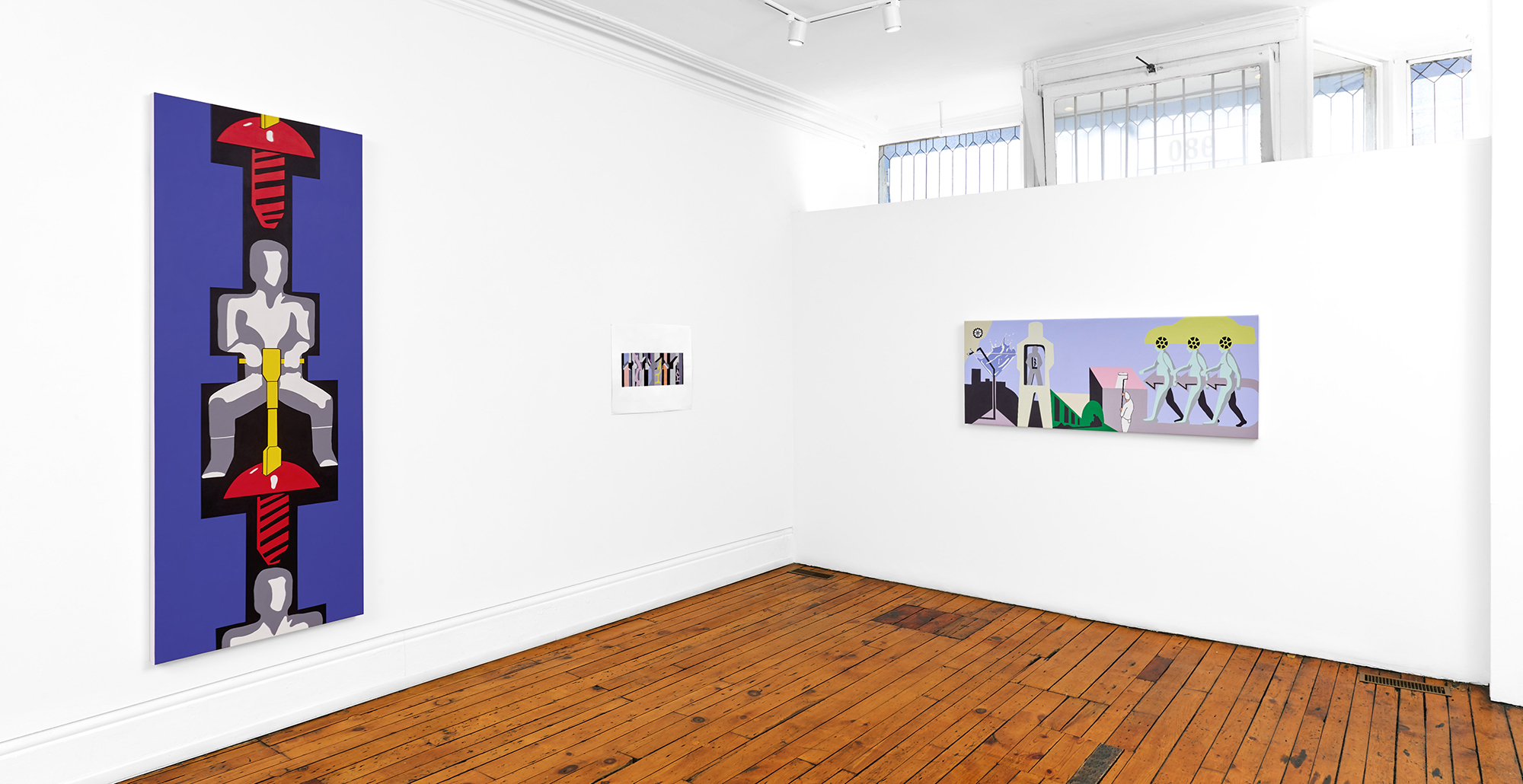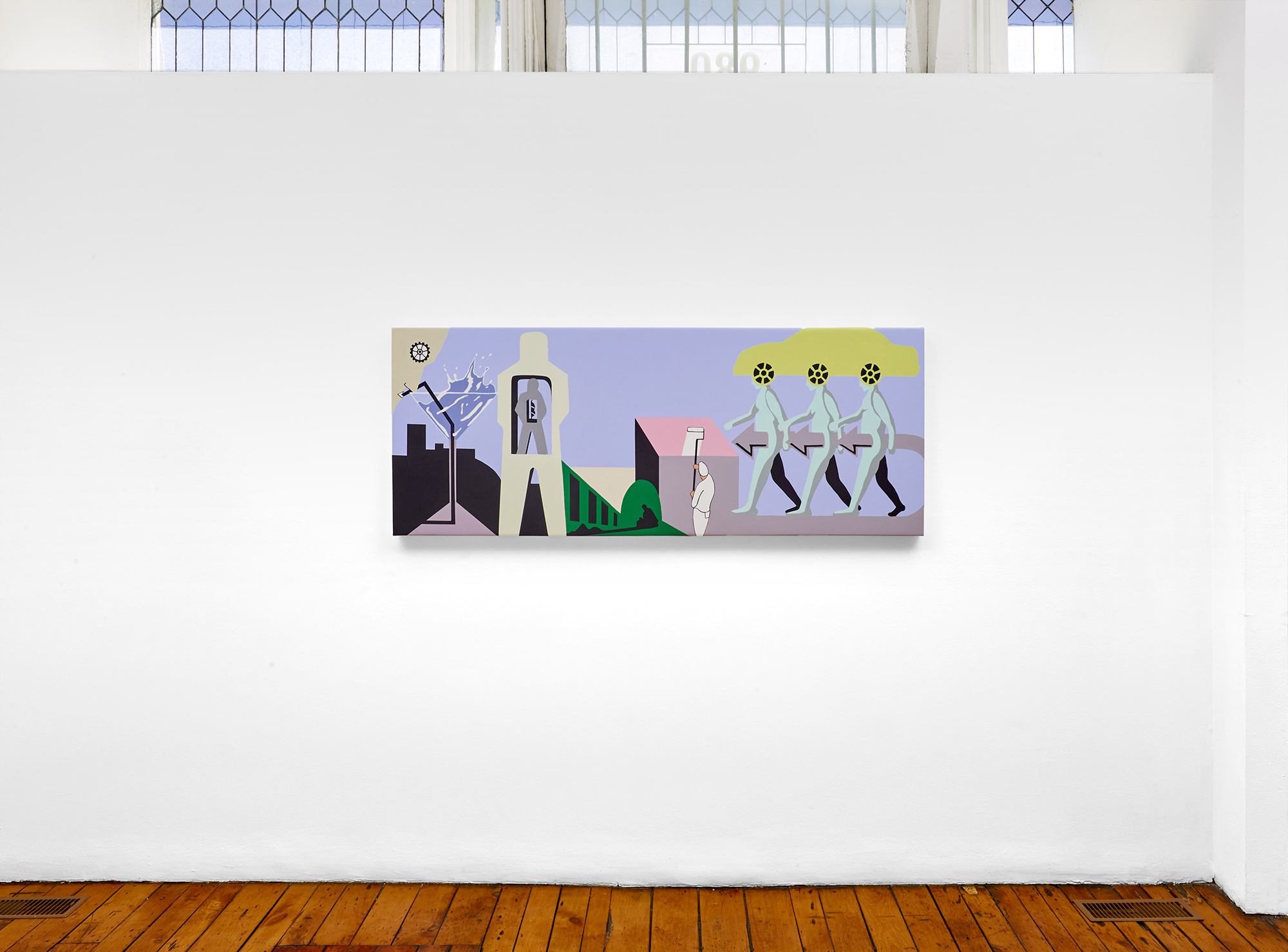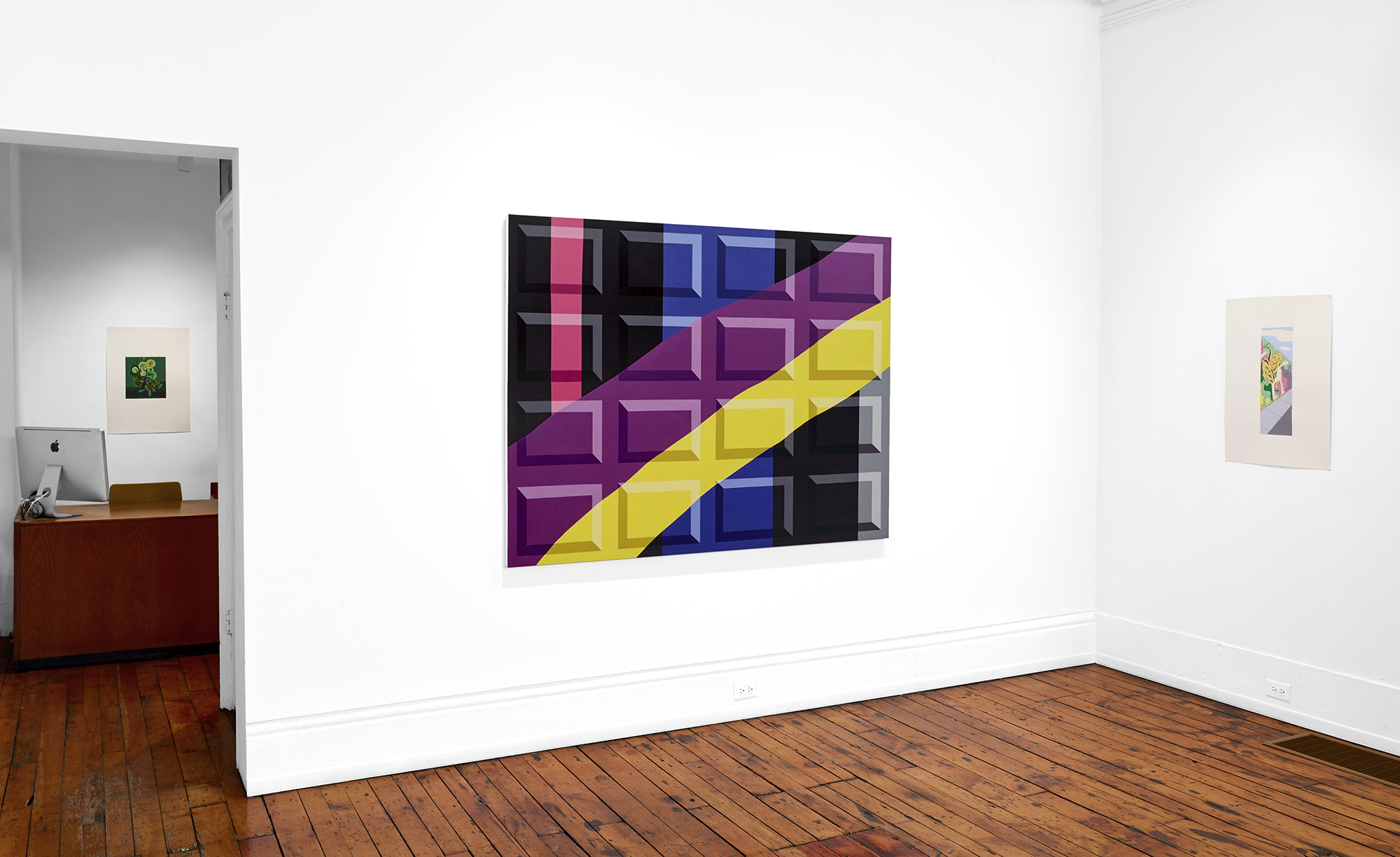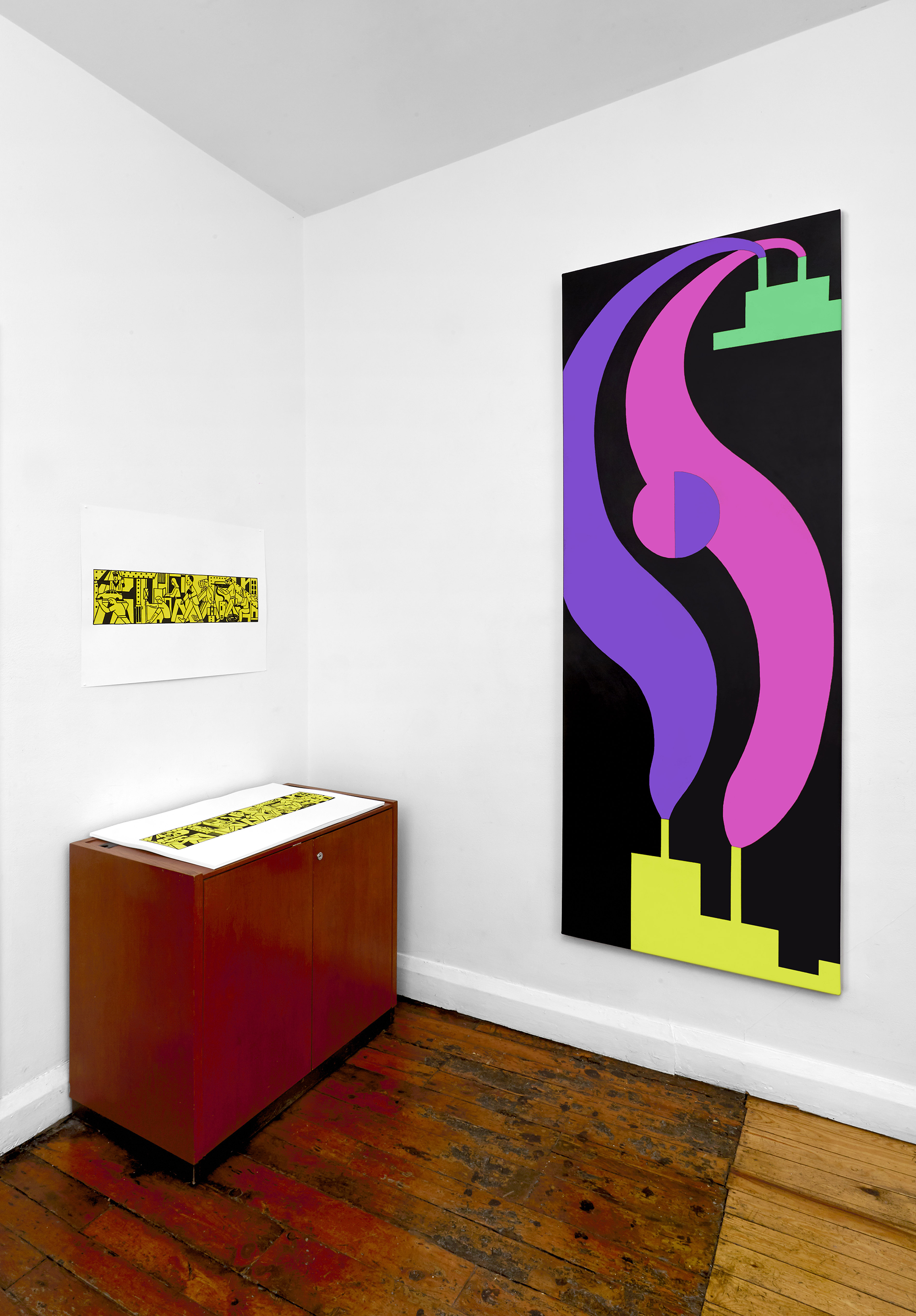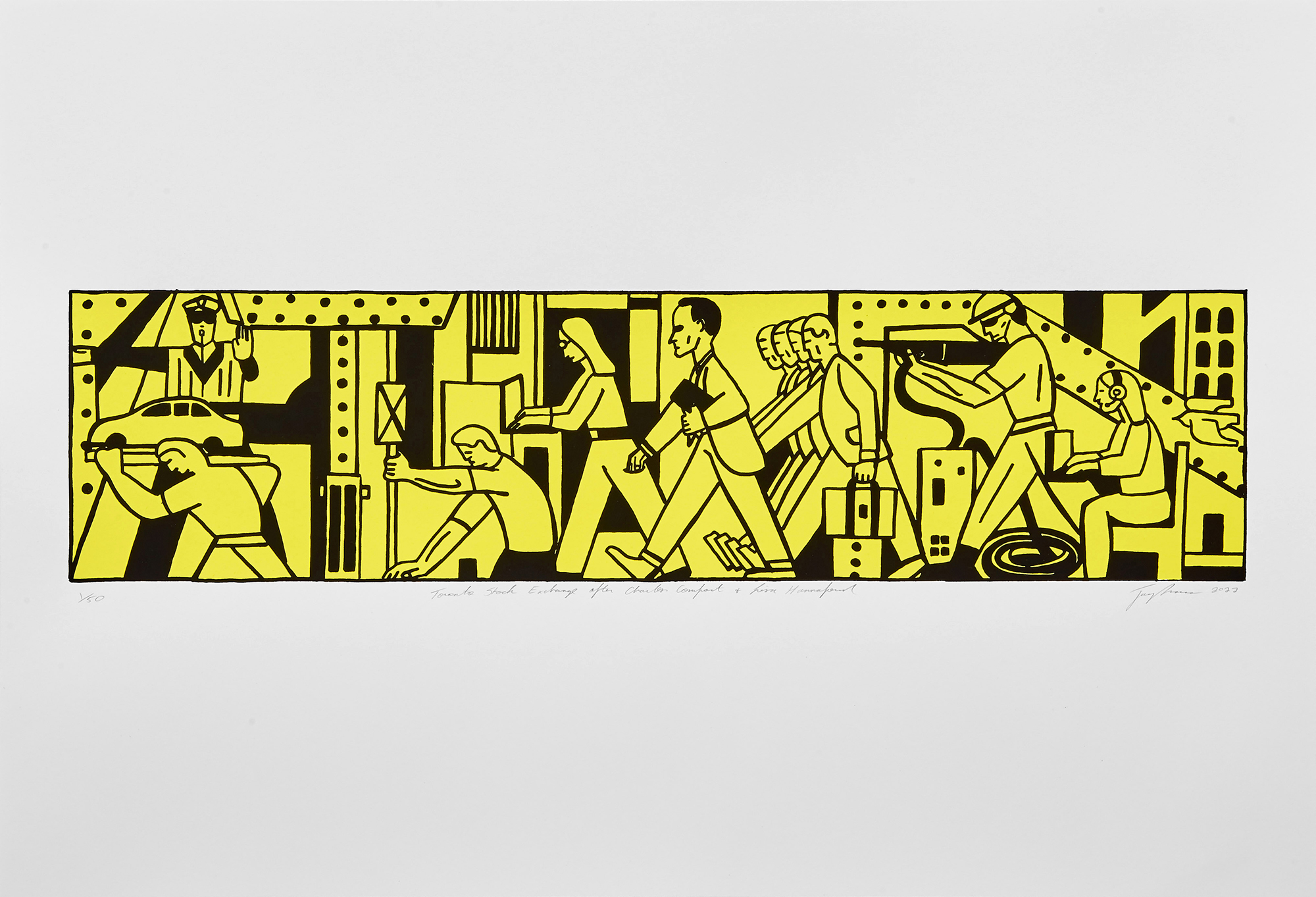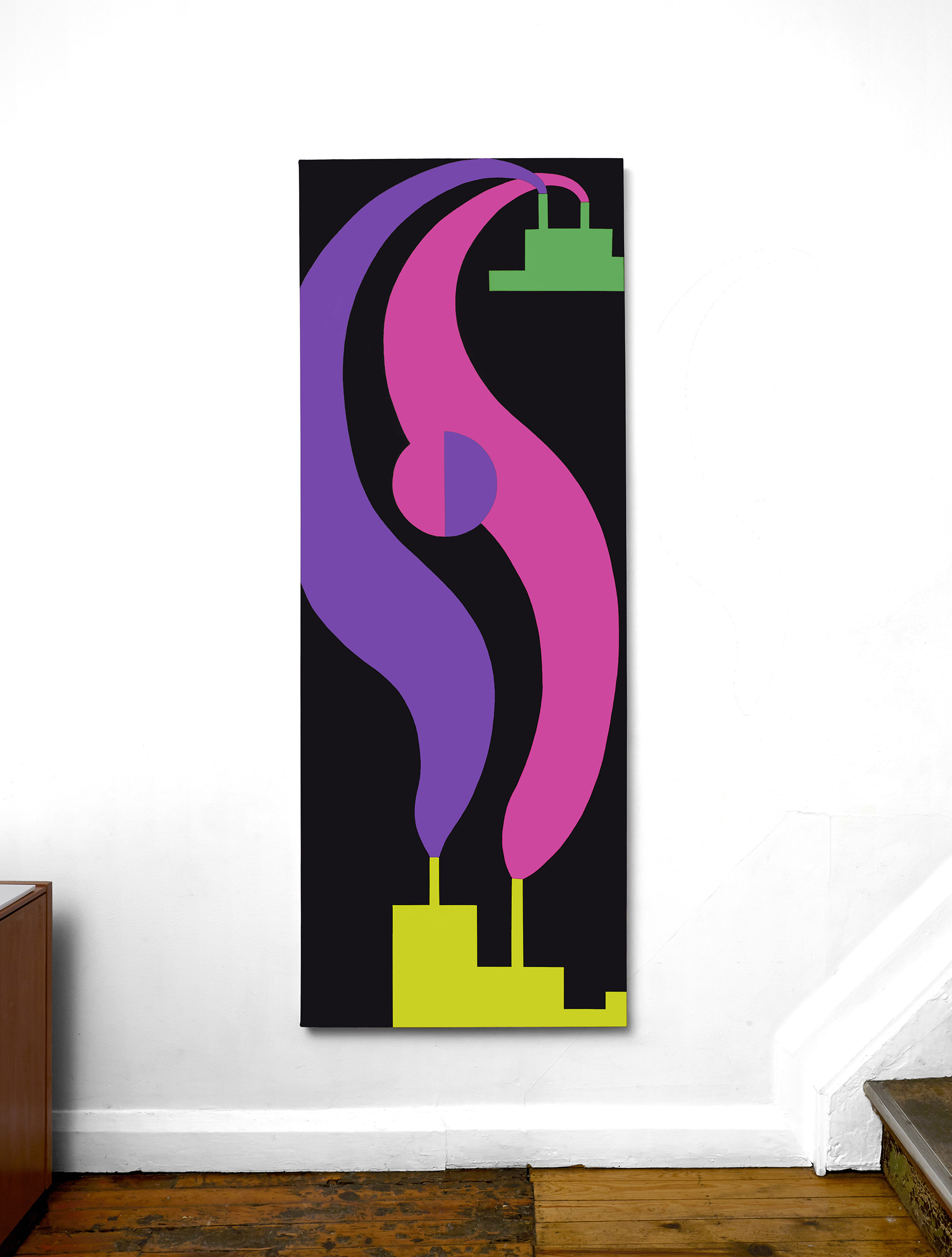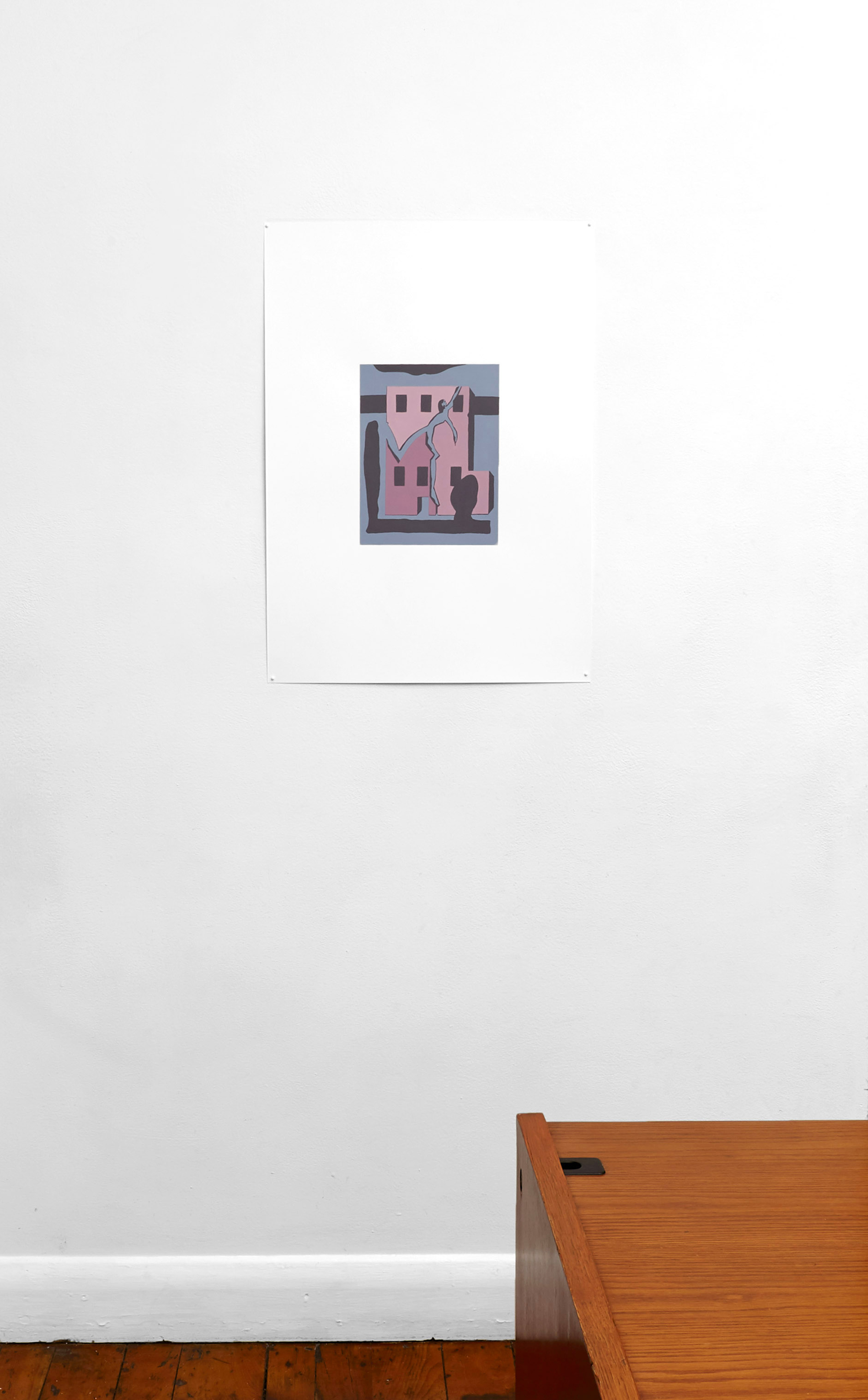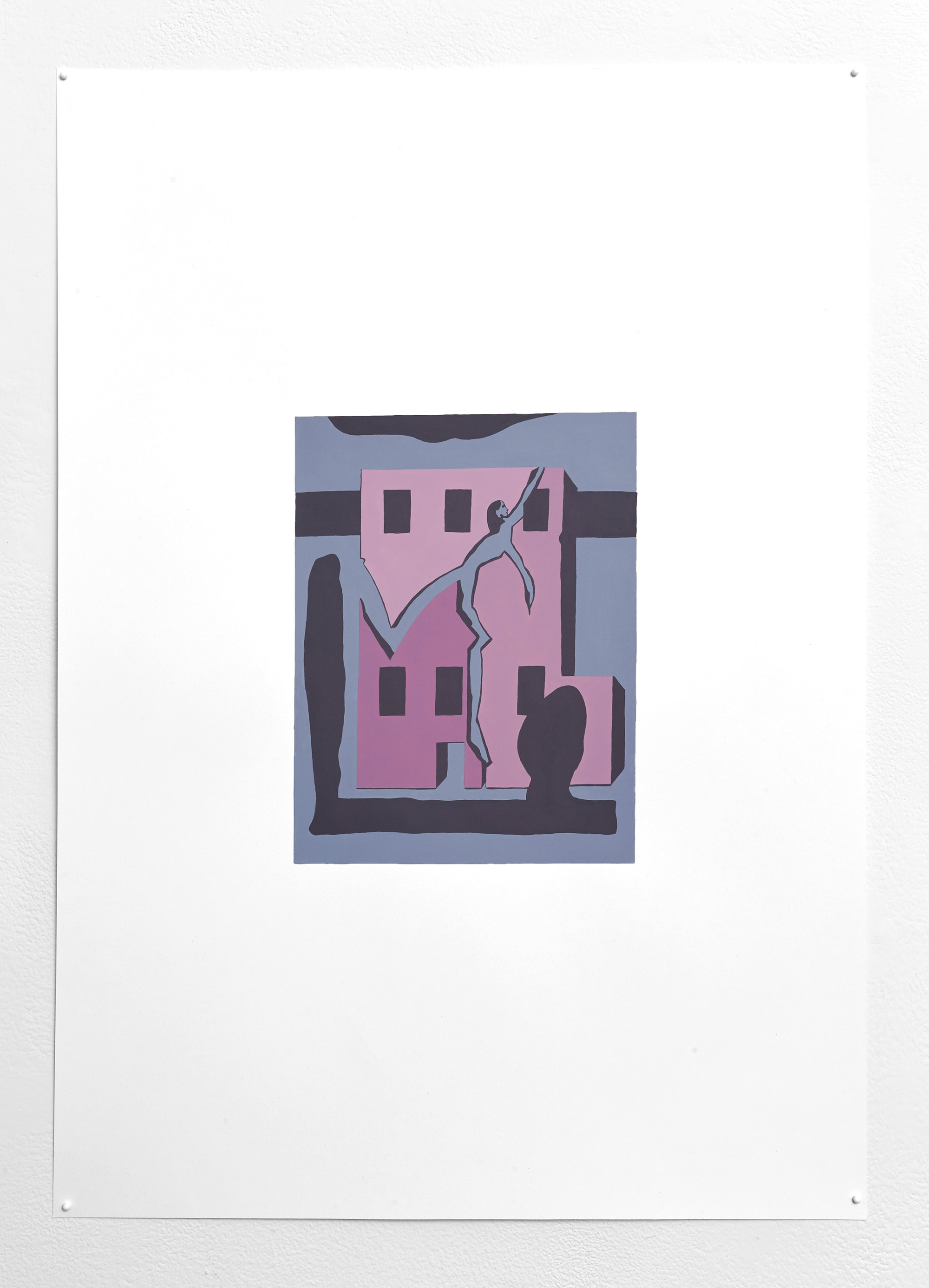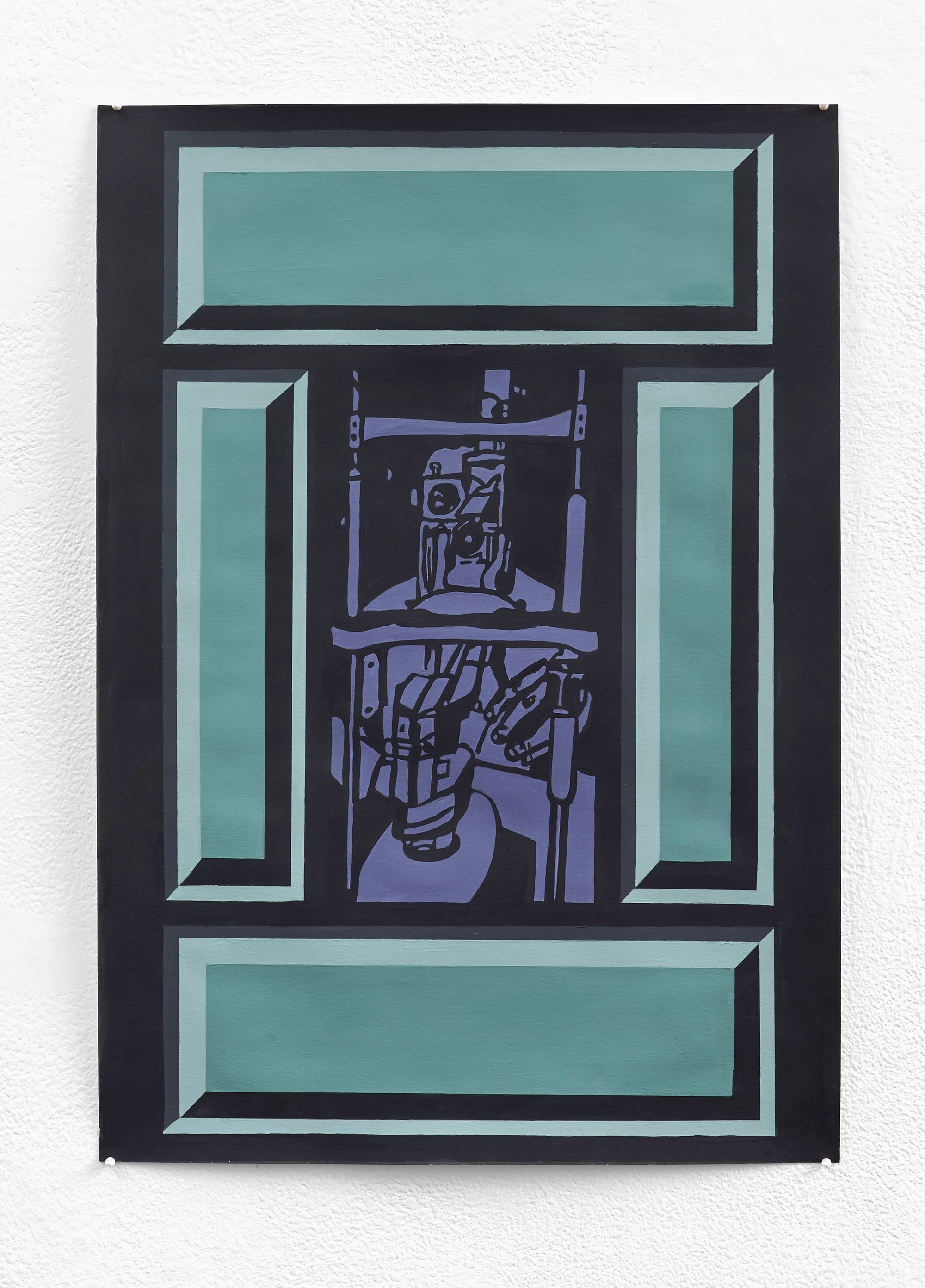Neutralizer Suite
Jay Isaac
paintings and works on paper
April 1 - May 7, 2022
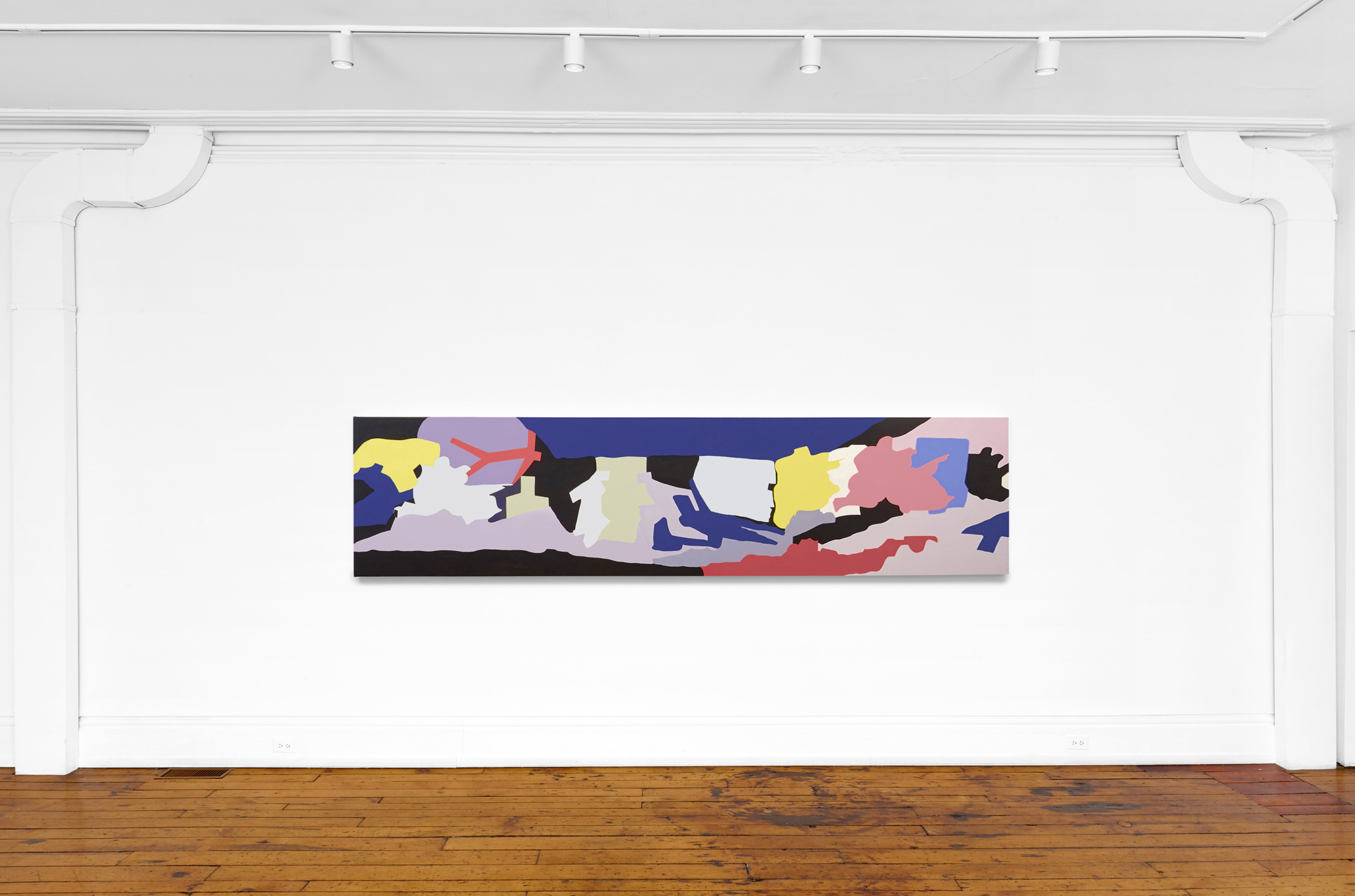
Neutralizer Suite notes
• As far as symbols go, the garage door is the most utilitarian “gateway”. A garage door could be painted in such a way that no one would tag it. It can reside unobtrusive in an alley as a colour field reminiscent of a Saliba Douaihy painting.
• I go to optometrists and ophthalmologists both for eye inflammation and for reading glasses. The Goya painting titled Asmodea is also titled Fantastic Vision. There are many people who believe they can change people’s minds.
• During the early stages of the pandemic, the anti-maskers were told by the maskers that they had to obey the rules. One logical argument would be, “If you stop at traffic lights and obey traffic rules then why won't you obey the new rule to wear a mask?” It didn’t occur to the logic providers that the response to their argument might be, “Now that you point it out, why am I obeying traffic laws?”. This resulted in more speed racing, traffic accidents and fatalities. The consequences of logic are real.
• There is a painting of flowers I made 14 years ago, an abstracted bouquet in greens that began to circulate in the last year on some of the conservative painting accounts on Instagram. I made a version of it recently in a flat, graphic manner. This will be the only time I ever do this exercise –the exercise being a condemnation of nostalgia and the aesthetics/capitalization of recognition.
• Each brushstroke can be traced to some place from the past. Some are more obvious than others. An inherent problem in painting is this fact. Neutralizing this inevitability by making paintings with no brush strokes is a temporary solution because I cannot stand to look at brushstrokes anymore. A brushstroke looks as outdated as someone wearing a top hat.
• I purchased a print at auction titled The Toronto Stock Exchange by Lisa Hannaford. I showed it to a friend, and they said it was based on the stone frieze by Charles Comfort which is above the entrance to the Toronto Stock Exchange. The version by me is the third known version. A stock, like an artwork, is a very specific entity. Is originality neutral?
• As a mixed-race Lebanese artist (base) I question how the predominant aesthetics, conceptualizations, presentations and articulations (carbon) which consciously or subconsciously create a solidified status quo ideology (acid), can be neutralized. Neutral can be a passive state (carbon, acid, status quo), or an active state (resistance, low carbon output, pH balanced), whereas neutralizing is an active state (resistance, expansion, carbon tax, base).
• Balance is a form of neutrality. The present is a type of neutrality. The middle ground between insider and outsider is neutral ground. Insiders require regular neutralizing so that they better understand the outsiders.
• These paintings aren’t going to neutralize anything, but are conceptual proposals. For example if I said, “These monochrome paintings are flags for a colony in space”, that’s a relatable conceptual proposition.
• There is a crack in a building that is so large, visitors can enter the building through it instead of using the door.
• Mixed race identity aesthetics have similarities to underground cultural movements where the separation between mainstream and other is intentional and preferred.
• The earth gives us a gift of life. We feed off the earth our entire lives. When it is time to give back, it comes in the form of our death, being absorbed back into the earth. If someone was to become immortal, or die and remain off-planet, then there would be an imbalance with unknown consequences.
Last thoughts:
• Observation is a neutral state. Sometimes neutral is good and sometimes it’s bad.
• The most vigorous form of contemporary communication is to gain some knowledge, then immediately hit someone over the head with it.
Side note: each painting and thought about the paintings is both clear and unclear. There are statements of truth, and statements of jest which may question the truth.
Jay Isaac
January 2022
JAY ISAAC (b. 1975, Saint John, NB, Canada) is a Canadian artist of Lebanese descent. He studied at the Emily Carr Institute of Art and Design, Vancouver, Canada (1993-1997) and at the Cardiff Institute of Art, Cardiff, Wales (1996). His work has been widely exhibited, with notable exhibitions at Galleria d’art moderna di Bologna, Bologna; MOCA Toronto; Mercer Union, Toronto; Galerie Kunstbuero, Vienna; The Power Plant, Toronto; White Columns, New York; Cue Art Foundation, New York; Agnes Etherington Art Center, Kingston, ON; Weatherspoon Art Museum, Greensboro, NC; The AGO, Toronto; CAG, Vancouver; Night Gallery, LA; Monte Clark Gallery, Toronto/Vancouver; Beaverbrook Art Gallery, Fredericton, NB; soon.tw, Montreal; David Risley Gallery Copenhagen; McIntosh Gallery, London, ON; Paul Petro Contemporary Art, Toronto.
Isaac was co-founder and publisher of Hunter and Cook Magazine (2009-2011) and founded and ran the @nationalgalleryofcanada Instagram account (2015-2016). He is the founder and co-director of Peter Estey Fine Art & Auctions (2018-present) which is an auction house that focuses on secondary market folk, outsider, Inuit and Canadian art. He has been the recipient of numerous awards including most recently: Canada Council Concept to Realization Grant (2022), Pollock-Krasner Foundation Grant (2021), Canada Council Research and Creation Grants (2021, 2018, 2017), Chalmers Art Fellowship (2019), Ontario Arts Council Project Grant (2018). Isaac’s work can be found in numerous public and corporate collections in Canada. Isaac lives and works in Rowley, NB, Canada.
The artist gratefully acknowledges the generous support of the Pollock-Krasner Foundation, the Canada Council for the Arts and the Ontario Arts Council.































